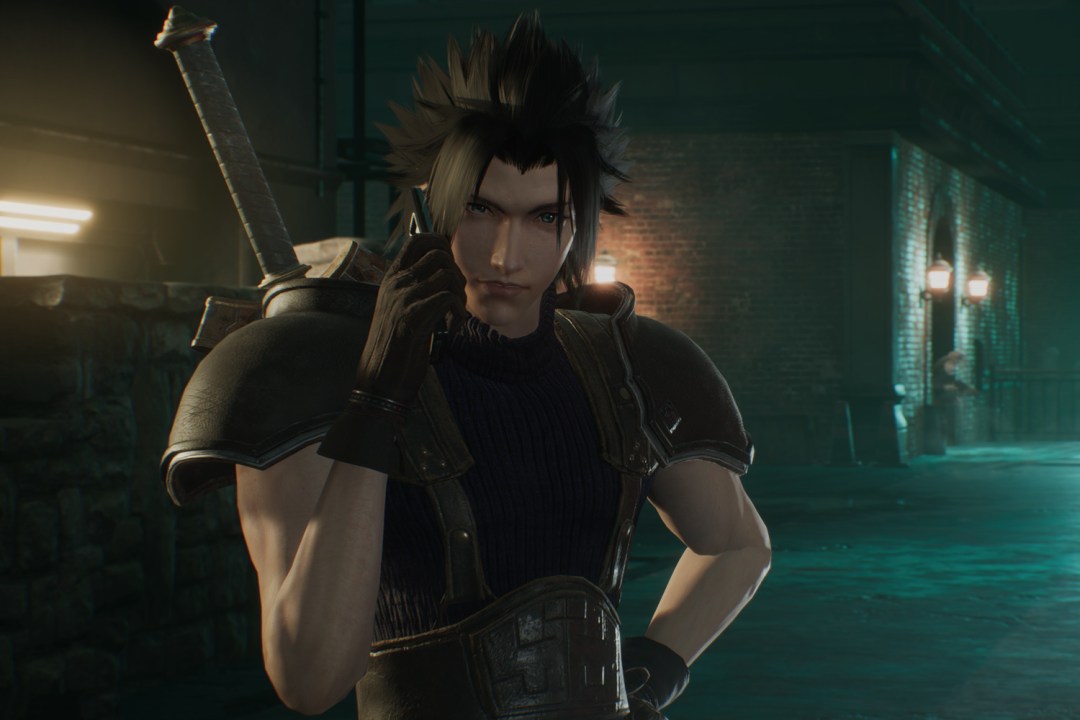Crisis Core: Final Fantasy – Reunion review: Back to Midgar
An action-packed prequel and interlude in the Final Fantasy VII universe

As much as we loved Final Fantasy VII Remake, and the care and attention that went into modernising one of gaming’s most beloved classics, the way it deviates from the original story has been a source of controversy amongst fans.
Yet for a while, Final Fantasy VII has no longer just been a game but a series consisting of multiple games and a CG-animated sequel. So it’s no surprise to see a retelling also reference these other facets, like how the remake’s Episode Yuffie DLC recalls elements from black sheep spin-off Dirge of Cerberus. With that in mind, now’s the perfect opportunity to re-introduce an entry that was previously only playable on the PlayStation Portable.
Crisis Core was envisioned as a prequel to the events of the original game, but given how VII Remake explicitly references it with some new implications, it’s more or less a required play ahead of the next instalment of the remake trilogy, Final Fantasy VII Rebirth, coming next winter.
Remastering masterclass


For those who haven’t played Crisis Core before or indeed Final Fantasy VII, we’ll try to avoid spoilers, although we do advise you play the latter first, be it the original or the remake.
Set seven years before Final Fantasy VII (the game doesn’t do a very good job of telling you this or distinguishing when there are time skips), you experience the story through the eyes of Zack Fair, a member of the elite fighting force SOLDIER. He’s looking to make his name as he looks up to other legendary figures, including his mentor Angeal, as well as Sephiroth, met before he becomes the iconic villain we’ve come to know.
This is actually a remaster of the 2007 PSP game rather than a remake, so structurally, the game is the same. That’ll be a relief for those who found VII Remake deviating too much, while also having a knack of padding the narrative out. In comparison, Crisis Core runs at a tight clip, where it’s possible to complete the main story in about 10-15 hours.
Yet this remaster is no mere exercise in up-ressing old textures or improving performance. In many ways, it looks like a whole new game, with new character models and even menus and UI resembling what we see in VII Remake. It also features new voice acting, using the same voice actors whose roles also appear in the remake. But having full voice acting over the original’s partially-recorded lines is uneven, with some performances coming off incredibly stilted and wooden.
Glossy new visuals alone also can’t hide its PSP origins, with reused animations giving current-gen characters the uncanny movements and dead-eyed expressions of past generations. Some pre-rendered CGI is reused for some sequences, and even with increased resolution, these 15-year old cutscenes stand out and don’t always correlate with the art style. Considering the original visuals were based on the PS2-era Kingdom Hearts engine, though, we’re probably splitting hairs.
SOLDIER of Fortune


Arguably the greatest improvement in this remaster is the combat. No doubt the extra buttons afforded on a console controller over the PSP make a huge difference, including a second analog stick to control the camera and lock onto targets. Whereas the original game made you cycle across different actions to use magic, skills, or items, now you’ve got a single dedicated face button for attacking. Hold a shoulder button and another assigned button activates your equipped materia abilities, with item usage still done by scrolling a menu bar. It’s instantly a more intuitive and fluid experience.
This remaster makes for a demonstrably better action game than VII Remake’s hybrid system, which still relies on waiting on ATB-inspired gauges to fill up for you to unleash your best skills. The extra graphical oomph, along with a combination of satisfying sound effects and haptics has every battle feeling terrific when a female automated voice announces ‘Conflict resolved!’
Crisis Core also features a unique mechanic, which can be confusing and distracting, known as DMW (Digital Mind Wave). Basically, it’s supposed to represent Zack’s emotional state during battle, with different characters he meets having a different effect on him, sometimes resulting in a mini flashback playing out. This is displayed as a kind of slot machine continuously spinning in the top left-hand corner. In other words, the mechanic is random, but you might get a buff, a short period where you’re invincible or can spam magic or skills without spending their respective gauges, or even the opportunity to use a powerful limit break.
Our advice is to not take too much notice of it until a perk materialises, which is when you can adapt your tactics as suits. It all adds to even more exciting battles, which is also helped by two new battle mechanics: a battle stance based on VII Remake’s Punisher Mode, unlocked once Zack acquires the iconic Buster Sword, and a short window to attack enemies and cancel or reduce their charged up special attacks. That one saved our hide on multiple occasions.
Mission in action


Just like VII Remake, Crisis Core is a great exercise in nostalgia. In some ways it’s even more effective, as the story covers more territory than just Midgar. Zack’s adventure sees him in familiar locations like Costa Del Sol, Junon Airport, and of course Nibelheim, which recreates the famous scenes seen in the original game via flashbacks.
But as interesting as the main story is, the side content isn’t quite as enticing. It could be because these are mostly done through a mission menu accessed at save crystals, which feels divorced from whatever you’re currently doing. These missions simply transport you to another bland environment where you just have to fight through a few challenges, before you’re rewarded with new equipment or materia.
The upside is these are usually brief excursions, with the opportunity to unlock exclusive rewards like summoning materia which lets you make iconic summons (albeit via the weird DMW slots process) like Ifrit, Bahamut, or Chocobo. Plus, it’s just an excuse to go through more of the game’s stylish and satisfying combat. If you’re needing a break from the story, it’s not too bad rinsing through these missions as a way to level up.
Ultimately, it’s just another telltale sign of the game’s 2007 PSP origins, much like Zack’s noughties era flip phone.
Crisis Core: Final Fantasy – Reunion verdict


Crisis Core Reunion is a lavish remaster that could by most accounts be considered a remake – were it not for the dated animations, level design, and some hilariously ropey dialogue that additional voice-acting hasn’t helped to improve. Nonetheless, this is still the best version of Crisis Core, and the first opportunity for players who didn’t own a PSP back in the day to experience it.
The leap from handheld to current-gen home consoles is plain to see, most crucially in its exciting real-time action combat. While staying true to its original and weird DMW mechanics, it also includes some invaluable improvements and additions.
It may not offer anything new story-wise (though this is also a relief for players who just want a nicer looking version of an old game) but Crisis Core isn’t just a terrific prequel to one of the greatest games of all time. It now feels like required reading in the wider context of the Final Fantasy VII Remake project.
Stuff Says…
The best way to revisit this Final Fantasy VII prequel ahead of the next Final Fantasy VII remake instalment
Good Stuff
Terrific graphical update
Fun satisfying combat with new improvements
Fantasy VII nostalgia galore
Bad Stuff
Some dated design and animations
Rote side missions
Pretty dodgy dialogue and voice acting
